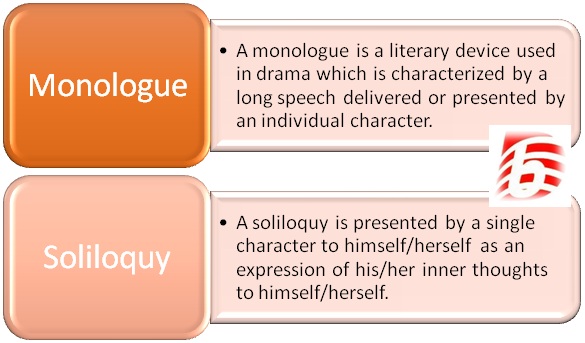Monologue vs Soliloquy
In literature, particularly in drama and theatre, monologue and soliloquy are two literary devices that are used to convey lengthy speeches by a character. Both terms involve a solitary speaker, but they differ in terms of their intended audience and purpose. Understanding the difference between monologue and soliloquy can be helpful for students of drama and theatre.
What is a Monologue?
A monologue is a long speech delivered by an individual character in a play, film, or other dramatic media. It is usually addressed to other characters or the audience. Monologues can be classified into three types: dramatic monologue (one character speaking to another), narrative monologue (one character relating a story), and active monologue (a speech used to achieve a specific goal). An example of a famous monologue is Marc Anthony’s speech in Julius Caesar, which begins with “Friends, Romans, Countrymen, lend me your ears…”
What is a Soliloquy?
A soliloquy is also a long speech presented by an individual character in a play, but it is not directed at any particular audience. Instead, it is an expression of the character’s inner thoughts and feelings, shared only with the real audience. Soliloquies were widely used by Shakespeare but became outdated as English drama shifted towards realism. Hamlet’s “To be or not to be” soliloquy is a well-known example.
Key Takeaways
- Monologues and soliloquies both involve a single character delivering a lengthy speech.
- Monologues can be addressed to other characters or the audience, whereas soliloquies are expressions of a character’s inner thoughts and are not intended to be heard by other characters.
- Soliloquies are a type of monologue.
